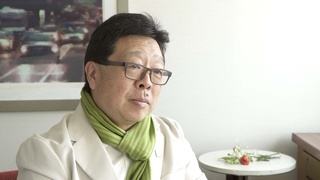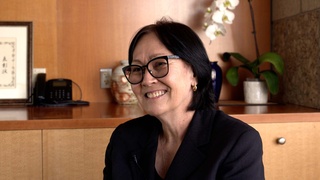Interviews
Thank You, Shakuhachi
I’ve learned a lot from the shakuhachi, both about Japanese, about being Japanese, about being Buddhist, I think maybe from Taoist kind of sources, too.
But bamboo, when you look at Asian culture, it’s hard not to look at bamboo. Philosophically, it bends. It teaches you to be resilient. If the hard wind blows—we talked earlier about gambaru and to persevere and things like that—that (?) never gets blown over in the strongest storm. It never breaks. It just bends. It’s empty. It’s empty in between these places. So it comes to represent the emptying out of poisons and ego and things like that—the things we want to conquer in ourselves and open ourselves up to the world, too. That whole thing of breath being involved in it—when you breathe into it, you take something that is just a tube and you give life back to the bamboo.
This kind of connection is also, then, connected to Buddhist prayer and Buddhist teaching. For me, the shakuhachi just comes to be a tool for better understanding identity and making it whole. It’s not just a musical thing, but it’s a tool. Artistically, it’s a beautiful instrument—simple and yet beautiful. I admire the craftsmanship that goes into making them. This one was made by a brother in New York, Perry Young.
There’s so much to be appreciated in the shakuhachi. The sound, again, when people hear the sound of the shakuhachi, they say, “Wow, that’s really incredible.” I think, like the Taiko, there’s something about it that strikes the resonance in that primal core. All of us maybe have a string running through us that vibrates a certain way. The shakuhachi and the taiko, they kind of vibrate at that same rate. So there’s this resonance that it doesn’t matter what culture you belong to, too. You can be Latin American, Latino, Black. I’ve sat in the park at 39th and played. When brothers come and sit next to me, and “Wow, man. That’s bad.” I could appreciate that, I think. So I thank the shakuhachi.
Date: December 10, 2004
Location: California, US
Interviewer: Art Hansen, Sojin Kim
Contributed by: Watase Media Arts Center, Japanese American National Museum



